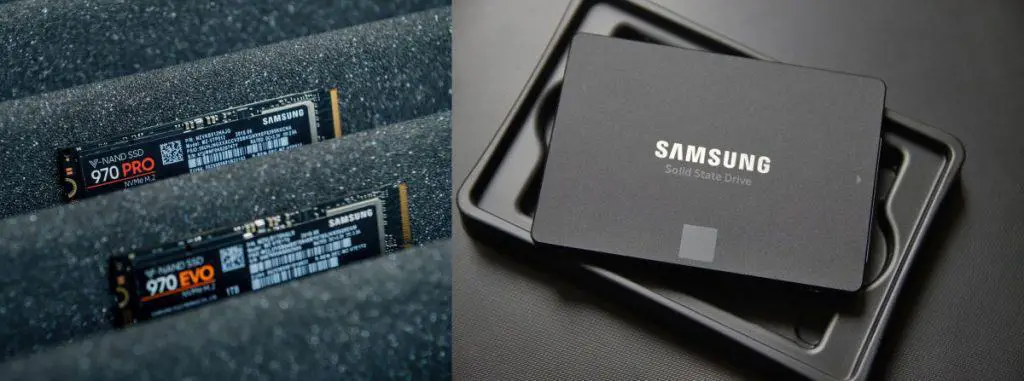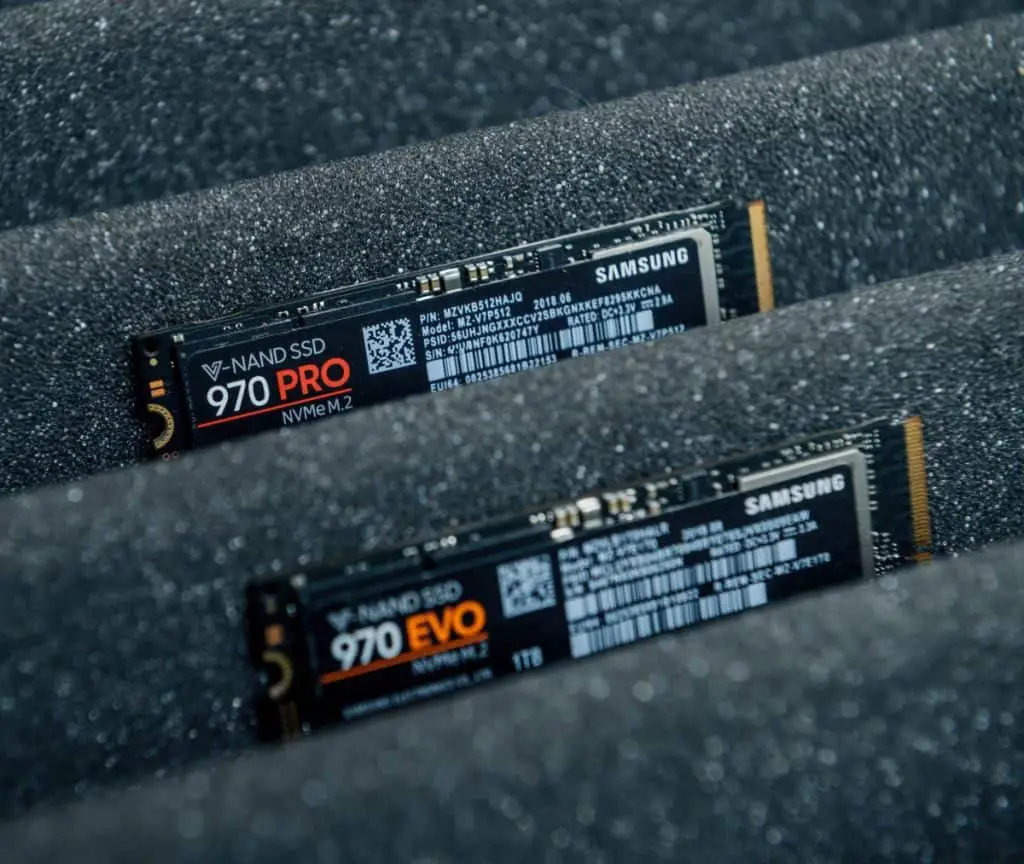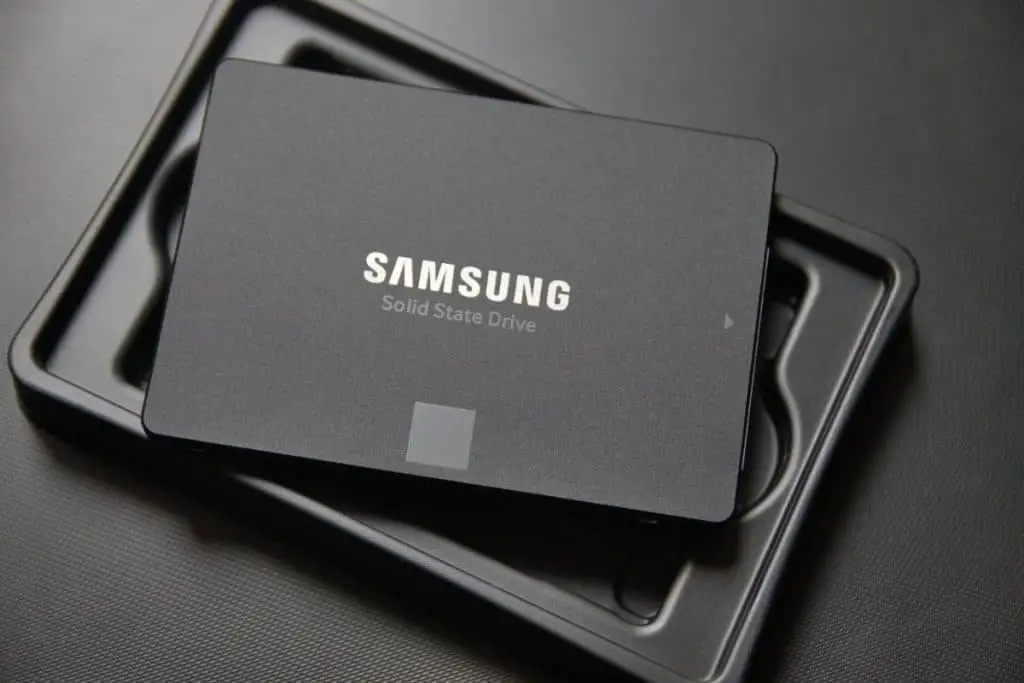We have gone a long way in terms of the components we use for our computers. Nowadays, the solid state drive or SSD is becoming the standard drive used for the storage in our laptops and desktops as it is steadily taking the place of hard disk drives or HDD as it is the faster of the two. But are laptop and desktop SSDs actually the same?
Yes, there are no differences between an SSD used for a laptop and the ones used for desktops because there is no such thing as a laptop SSD or a desktop SSD. Solid state drives are generally the same and are made to have the same form factor regardless of where they are used for.
Because laptop and desktop SSDs are generally the same, that means that you can basically interchange the drive you use for your laptop and the one you use for your desktop. This makes it easy for you to transition from your laptop or desktop or vice versa as you can simply use the same drive on the laptop or the desktop.

What is an SSD?
When it comes to our computers regardless of whether we are talking about our laptops or our desktops, we have to make use of storage devices where we basically store the files that our computer needs to function on a regular basis. These are often called storage drives, and they contain all of the necessary files that the computer needs such as the software it requires to run its hardware.
In that regard, the hard disk drive or HDD has long been the standard for storage drives for many years as most of the standard laptops and desktops make use of the HDD for storing their files. And during the HDD’s lifetime, we never even thought that it would get replaced until the rise of a faster and better counterpart.
Today, the rising standard in storage drives is the solid state drive or the SSD. Technically, the SSD has the same function as the HDD in the sense that it is supposed to serve as a main or a backup storage device for a laptop or a desktop. However, the SSD does not come with moving parts and is smaller and faster compared to its HDD counterpart. The fact that it is smaller and faster is what has made it a popular storage device for laptops and desktops alike.
Also, because the SSD is smaller, quieter, and not as power-hungry as the HDD, it has become the ideal storage drive for most laptops today because laptops are supposed to be compact and small enough for you to be able to carry them around. Moreover, because laptops run on battery power most of the time, it becomes important for them to have a drive that doesn’t consume as much power as the HDD. This is why the SSD is becoming quite popular for laptops but is also becoming just as popular for desktops, especially for hardcore gaming due to how it operates at cooler temperatures and has faster loading speeds.

Are laptop and desktop SSDs the same?
At this point, you already have an idea of what an SSD is and why it is becoming quite popular for laptops and desktops alike. However, you might be wondering if there are any differences between the SSDs that you use for laptops and the ones that are used in desktops. That said, are laptop and desktop SSDs actually the same?
Yes, laptop and desktop SSDs are actually just the same because there are no SSDs that are primarily designed to be used for either a laptop or a desktop. All SSDs are made to be the same in terms of form factor and purpose, which is to serve as a primary or backup storage device. In that regard, there are no differences between laptop and desktop SSDs.
This is something that has also made the SSD a more favored storage device compared to the HDD. While you can also use laptop HDDs for desktops, the problem here is that they are not always interchangeable. That’s because most desktops use a 3.5-inch HDD form factor because this allows the HDD to have more space for the different moving parts that it uses to function such as the disk platters and motors.
The fact that a desktop HDD is larger than a laptop HDD is also the reason why most desktop computers have larger storage spaces compared to laptops. And because HDDs in desktops are large, it becomes difficult for you to fit them into laptops unless you want a bulky laptop.
This is where the SSD stands out as all SSDs are made to be 2.5 inches (while there are more powerful 3.5 SSDs out there). The reason why SSDs can afford to be smaller is the fact that they don’t need the extra space for moving parts, which they don’t have. So, in that regard, it doesn’t matter whether you are using a laptop or a desktop because the SSDs you use in either of those computers are actually just the same.

Can you use a desktop SSD on a laptop?
Now that you know that a laptop and desktop SSDs are similar to one another, does that mean that you can actually use a desktop SSD on a laptop? After all, this isn’t something that you could always do with desktop HDDs, which are generally larger than the ones you find in laptops.
The good news is that, yes, you can the SSD you use for your desktop computer for your laptop computer because of the very fact that the form factor of a desktop SSD is just the same as the storage devices that are used for laptops. Regardless of how large the desktop computer might be, it will still be using a 2.5-inch SSD, which should be able to fit most laptops nowadays.
It is also worthy to note that the connectors that are used for laptop and desktop SSDs have been standardized. This means that it is now easier for you to use any kind of SSD for your laptop or desktop as they are generally just the same.
The fact that you can interchange your SSD between your desktop and laptop also means that it will be easier for you to switch the drives. For example, if you have a laptop with an SSD and you are planning to use a desktop primarily, you can now take apart your laptop and use its SSD for your desktop. The same can be said if you have a desktop with an SSD and you want to upgrade the drive used by your laptop.
However, if you do have an extra SSD and you have both a laptop and a desktop, we recommend that you buy an external SSD case for your extra SSD. This will allow you to use the SSD as an external storage device that you can use for both your laptop and your desktop.
